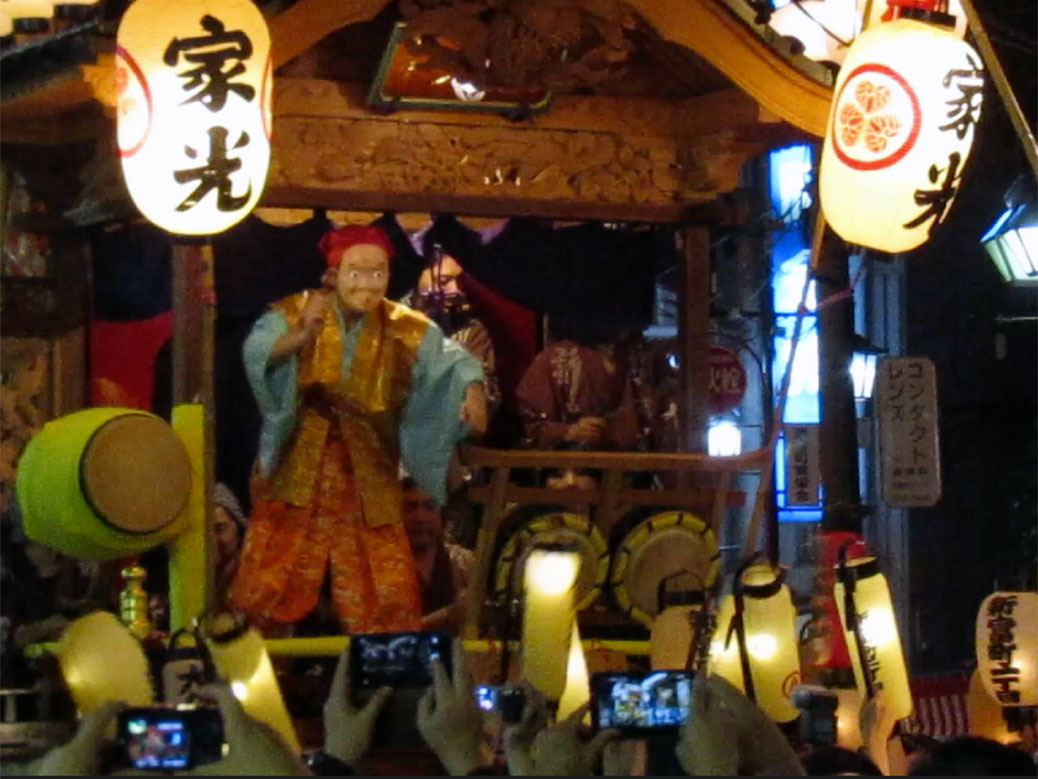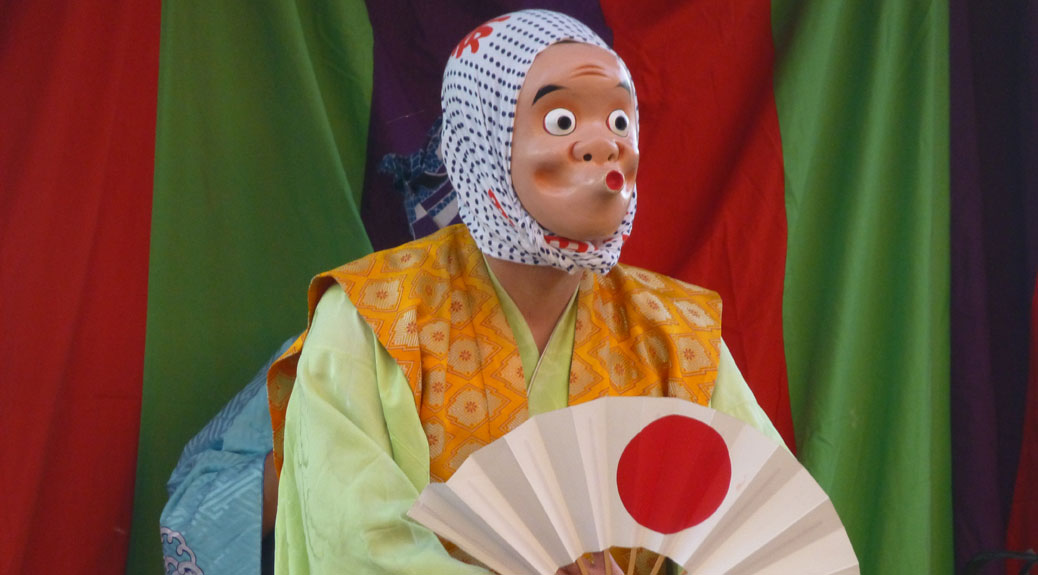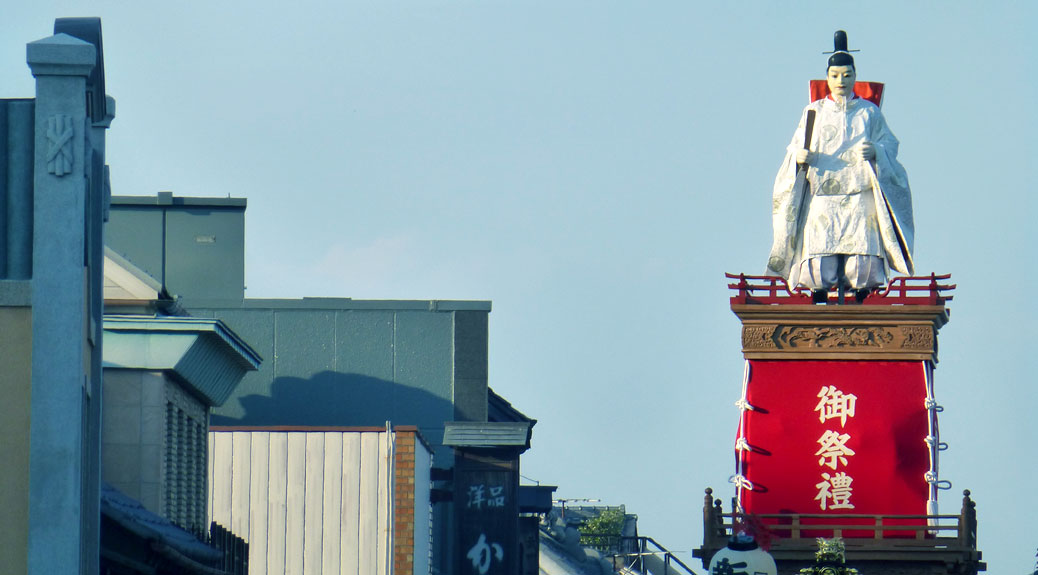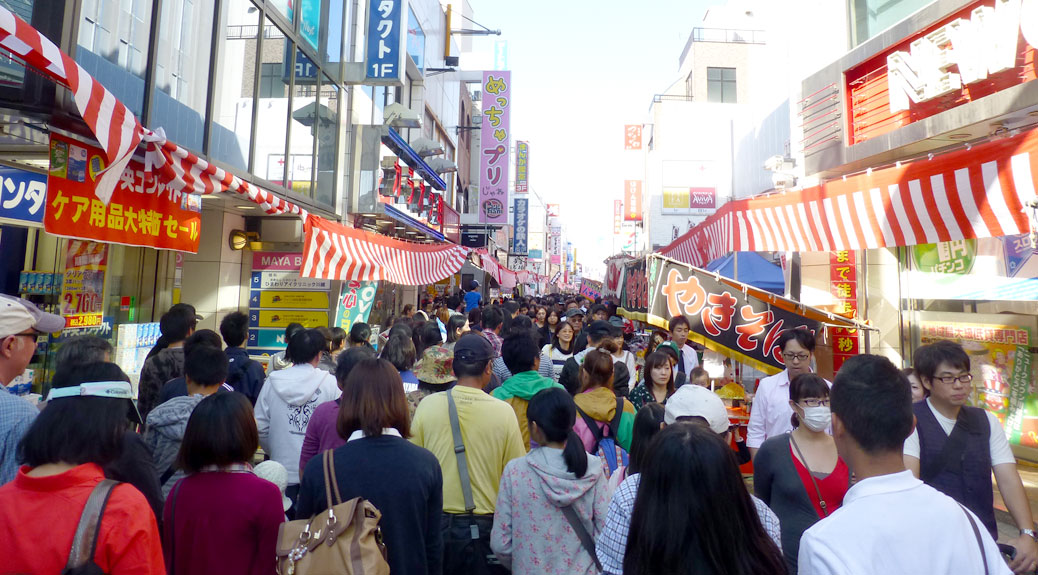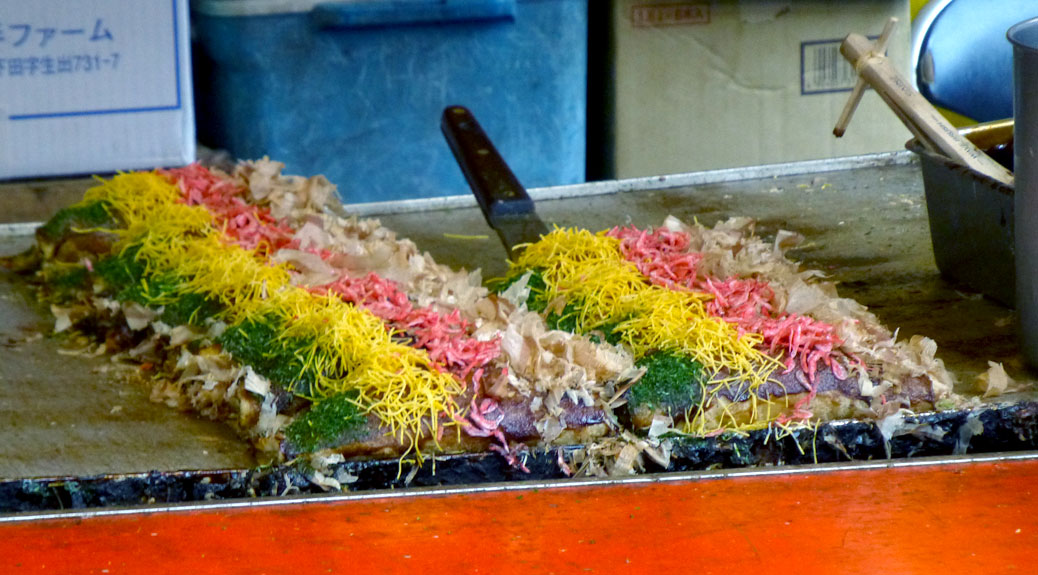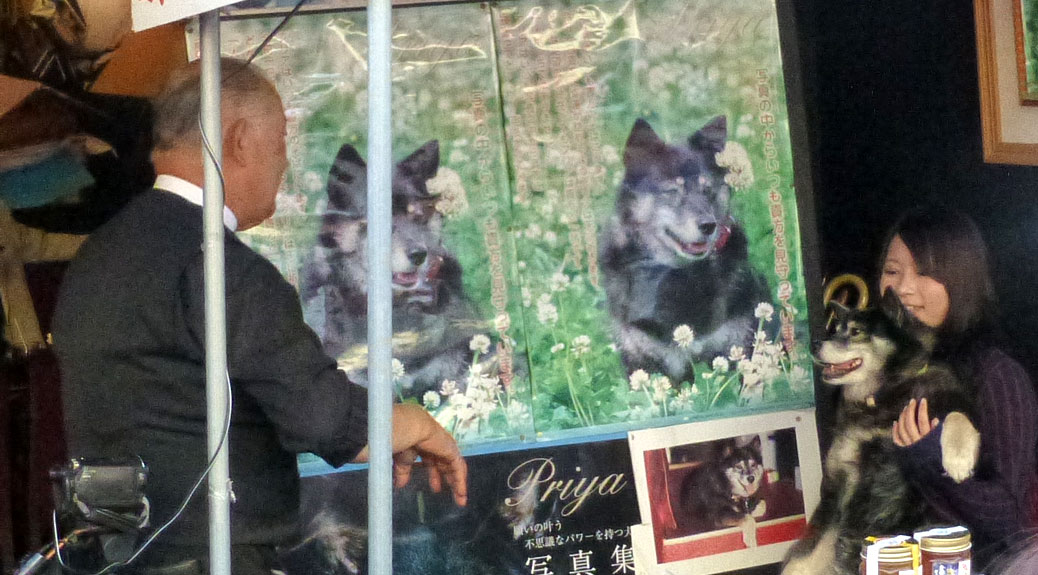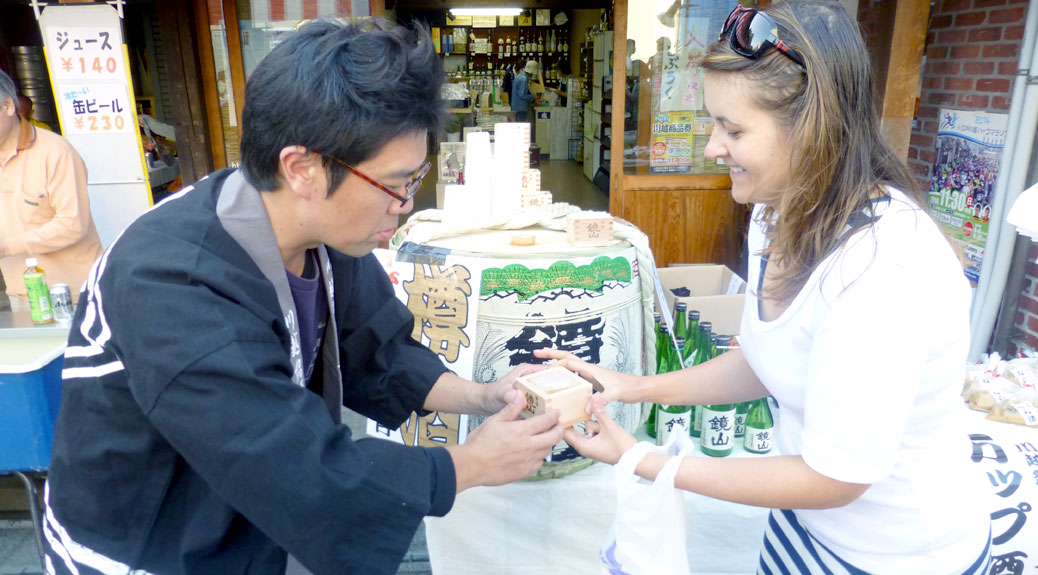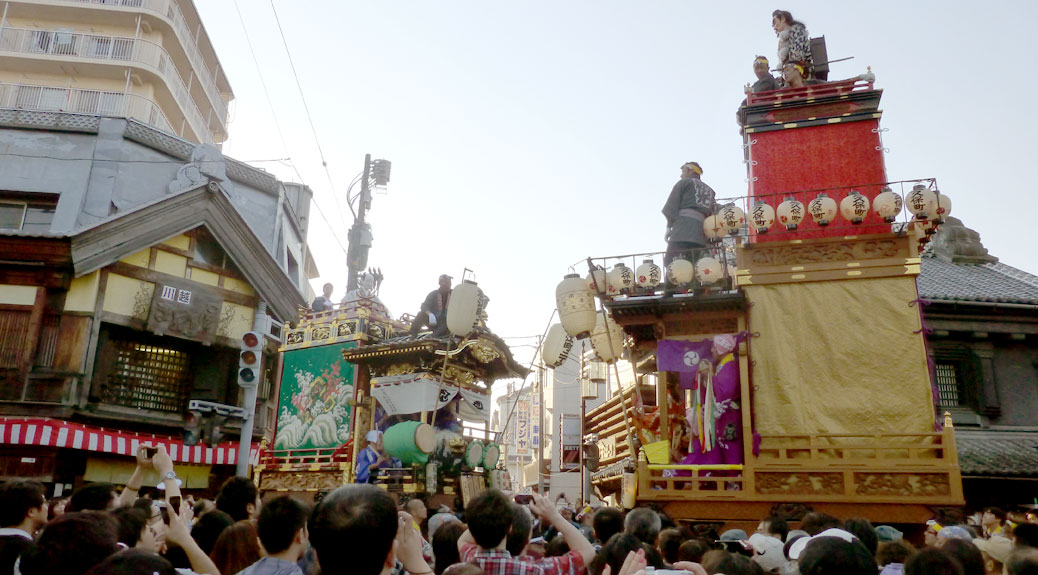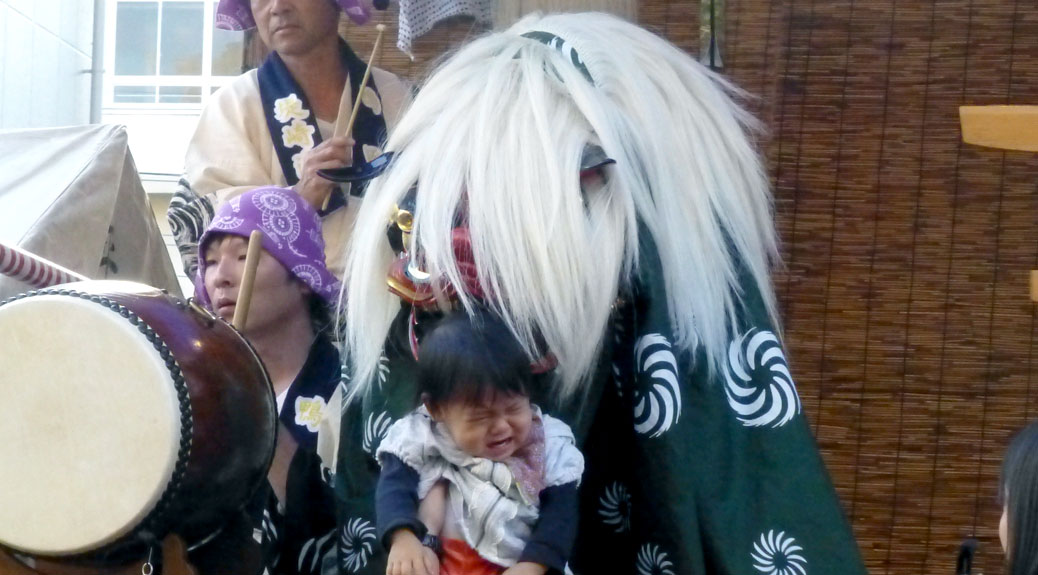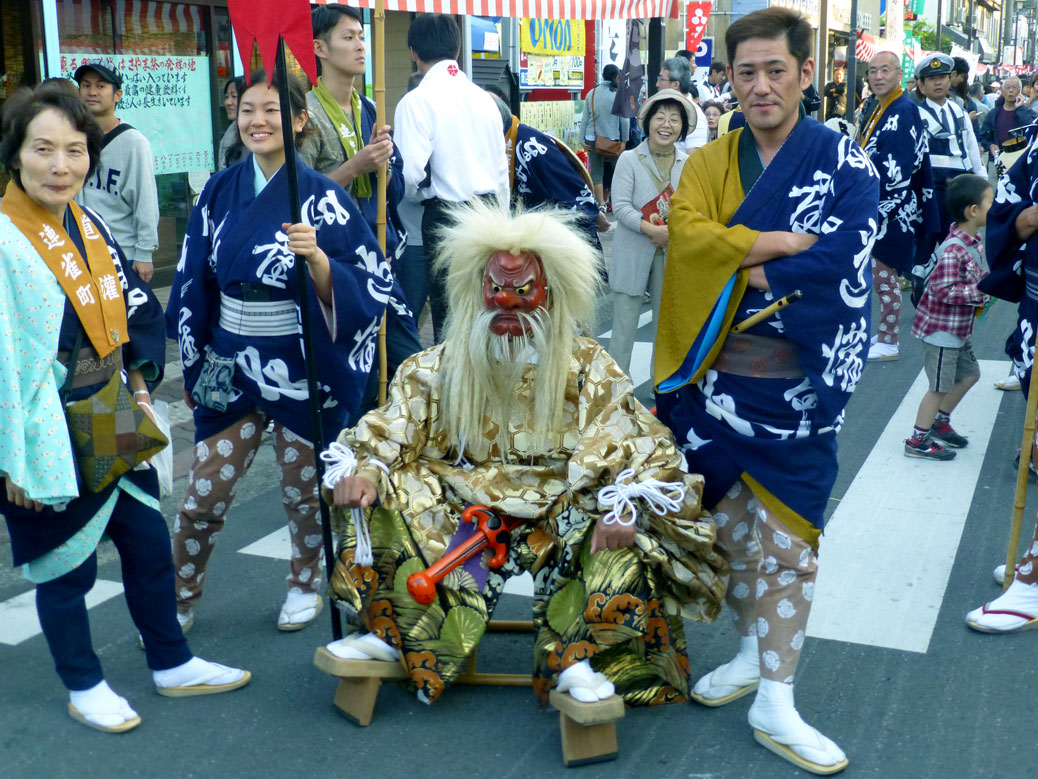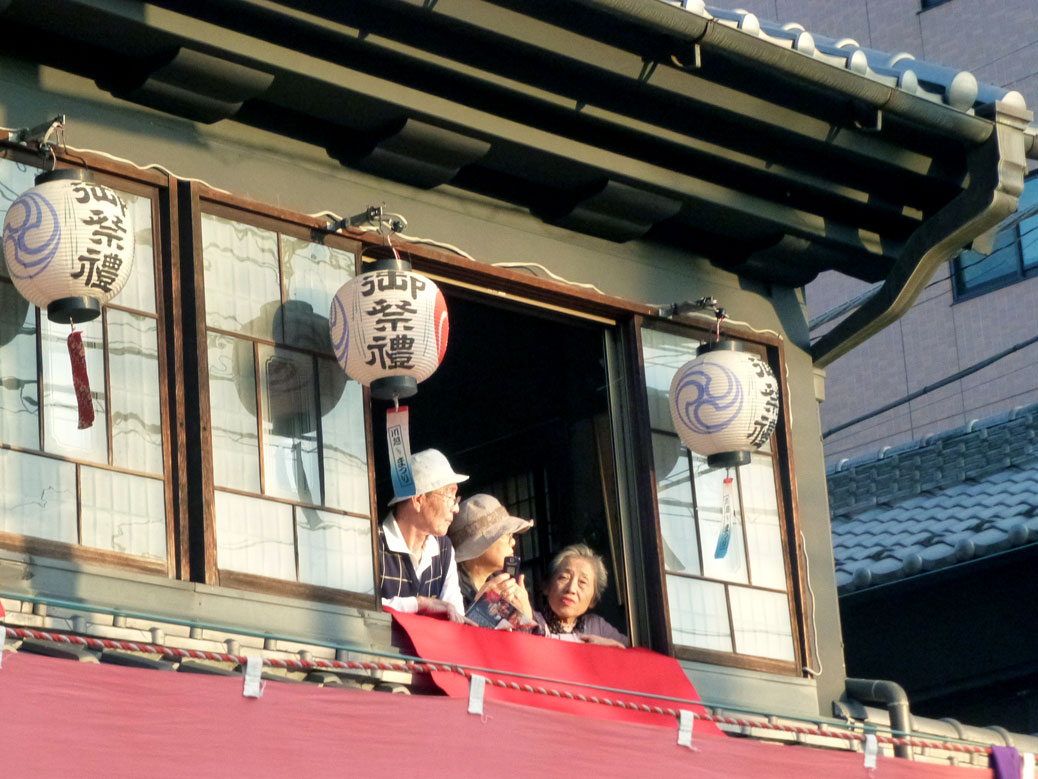Last fall, we enjoyed a day at the Kawagoe Festival, the largest and oldest festival in our little slice of Japan. Check out last year’s post for the festival’s history and a video of the floats.

This year’s festival was a different experience. We’ve tried our best to stay in touch with our old neighbors—Tomoko and her two young girls—who moved to another part of town. This past spring, we were invited to a hanami (cherry blossom viewing) party with them. Japanese families are multigenerational, tight-knit units, so we got to know some of their extended family as well.

We missed out on an invite to Obon in August due to our travels through Asia, but Tomoko reached out last week to extend an invite to Kawagoe Festival. To see the festival through the eyes of locals was truly an honor.
I met the family near the train station at 7 p.m. It wasn’t more than five minutes in before the father-in-law was buying beers for the group.
As we walked through the city, Tomoko pointed out Kawagoe Kindergarten, then pointed to her sister-in-law, herself, her mother and her children. All three generations had attended the ivy-covered school. Pretty cool!

We watched the dashi—massive, multi-decked festival floats—as they traveled toward each other down the streets of central Kawagoe. They stopped when they met, “battling” each other with live music and dancing. Tomoko’s sister-in-law indicated which float had “won” the battle.

We wandered through the festival, which fills three square miles of Kawagoe’s shopping streets, for about an hour. The kids loaded up on candy from the various vendors before stopping to take a photo with a police car. Around 8:30 p.m., it appeared we were on our way out.

Tomoko said she’d give me a ride home. But first, we stopped at one of the stands where they bought steamed buns—nikuman in Japanese—for all of us.

The whole group walked and walked until I wasn’t even sure where we were anymore. After about 25 minutes, we arrived at the sister-in-law’s house. They invited me in and everyone started getting comfortable.
It was the first time I’ve ever been in a proper Japanese home. While we’re a little loose with the no-shoes-in-the-house rule, they were not. Shoes were removed in the entry way. No socks on the entryway floor; no shoes in the house. We all washed our hands upon entering. Other than that, it was just like any other home. Comfy couch, television front and center. A piano sat against the wall, serving more as a shelf than a musical instrument.
The father-in-law turned on the TV and brought out a couple more beers—one for me, one for him. The kids started getting out their toys. The mother-in-law headed into the kitchen. It was clear we weren’t going anywhere for awhile.

Out came the steamed buns. Then some homemade cheesecake. And some tea. And some mikan oranges. One by one like a four-course dessert set. Hasumi, Tomoko’s youngest girl, brought me pieces of her konpeitō (rock candy), two at a time. Everyone asked questions: What Japanese foods do you like? How do you say __________ in English? Is it OK to say __________?
Around 10 p.m., Tomoko’s mother started looking at her watch. Around 10:30 p.m., we started packing up the kids and made the short walk down the street to Tomoko’s car and headed home.
I thanked them profusely for all of their kindness and went inside… an authentic Japanese festival experience in the books.

